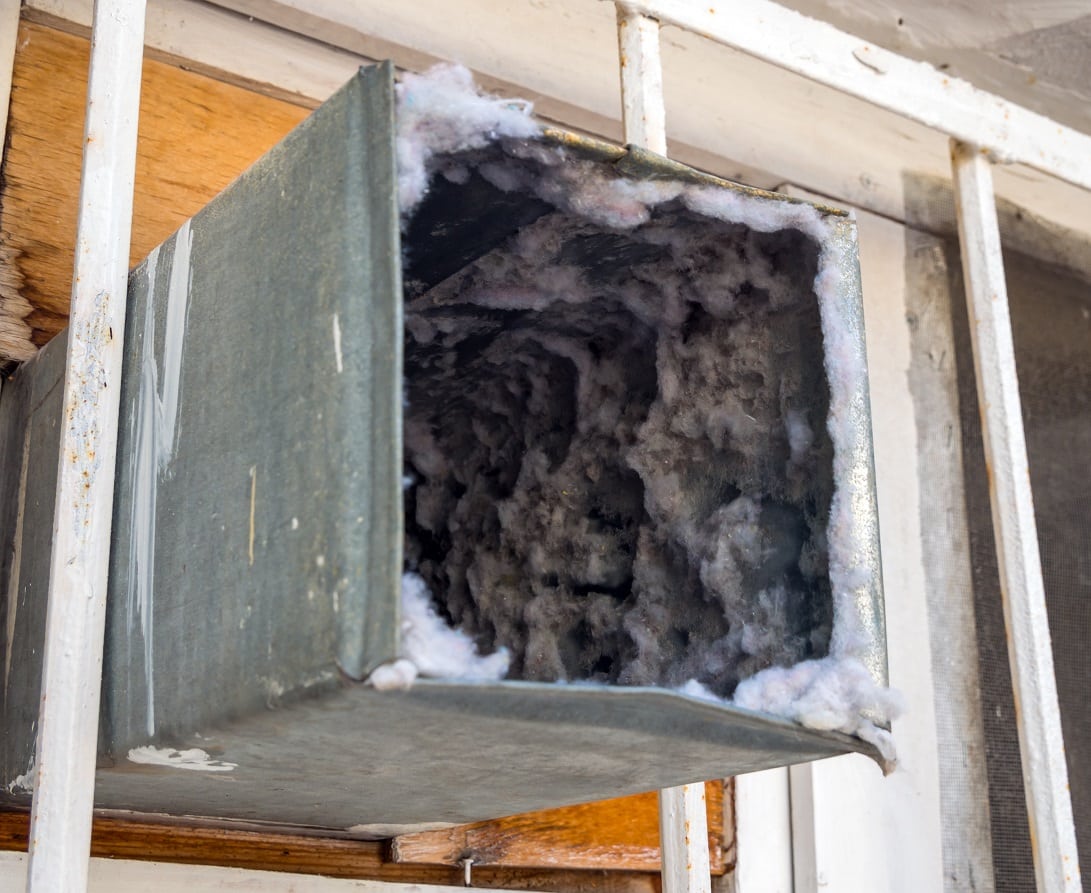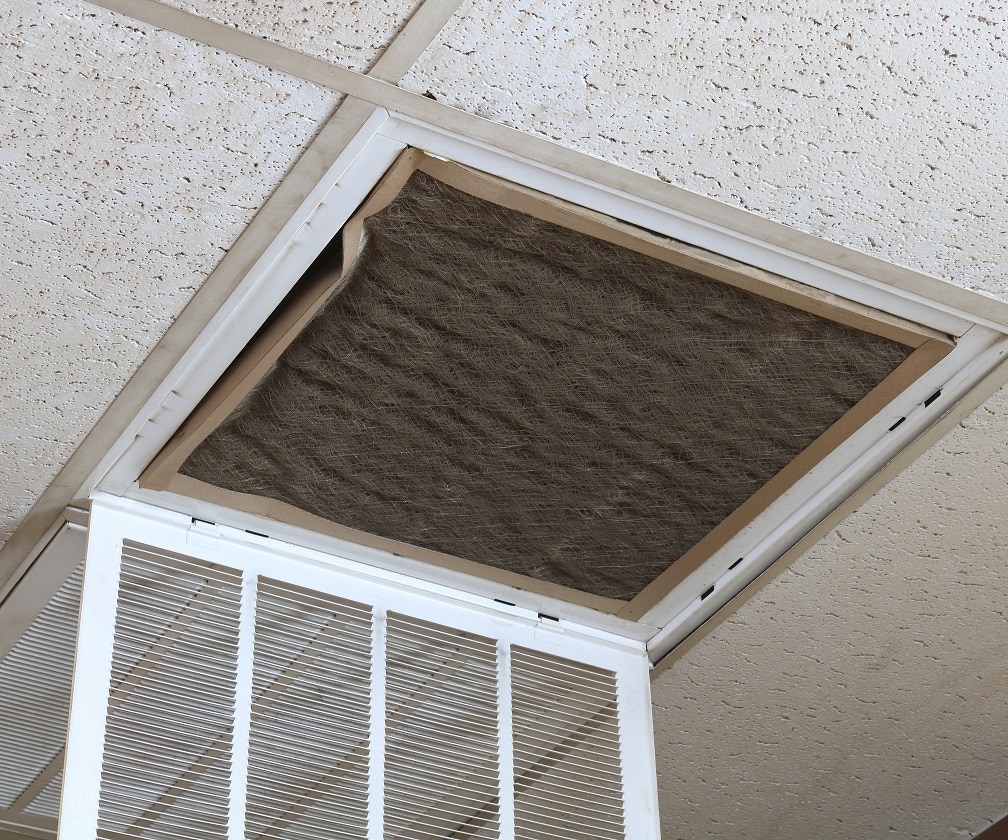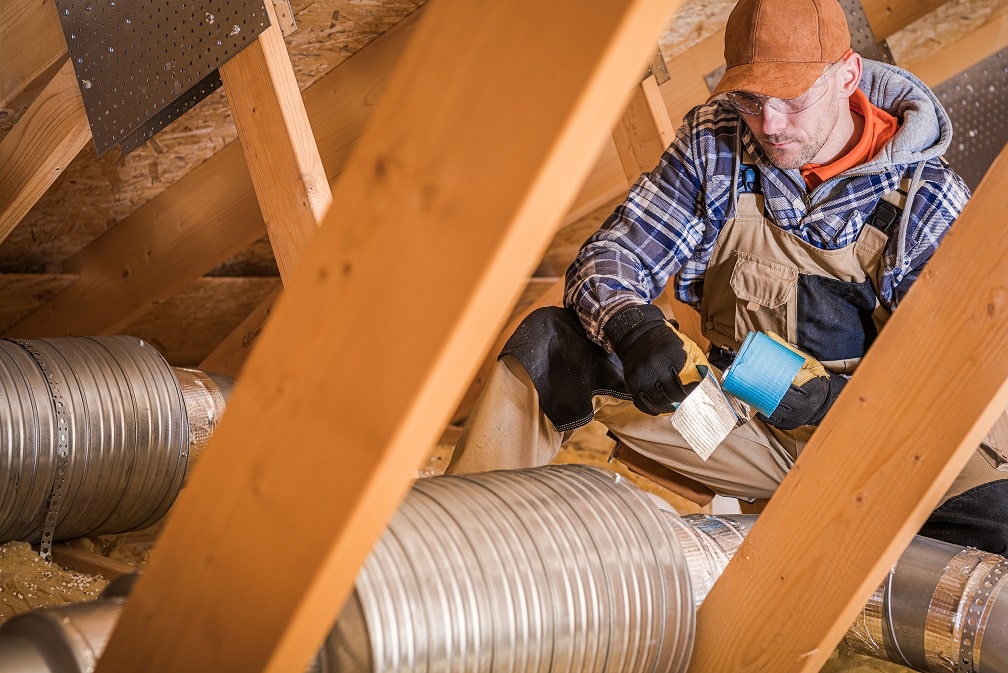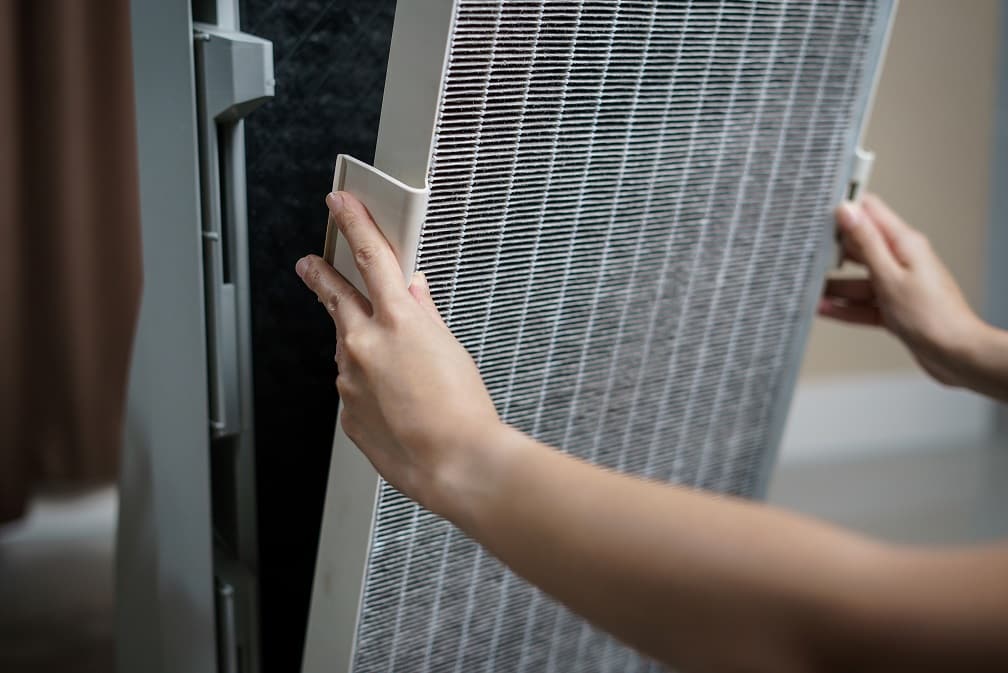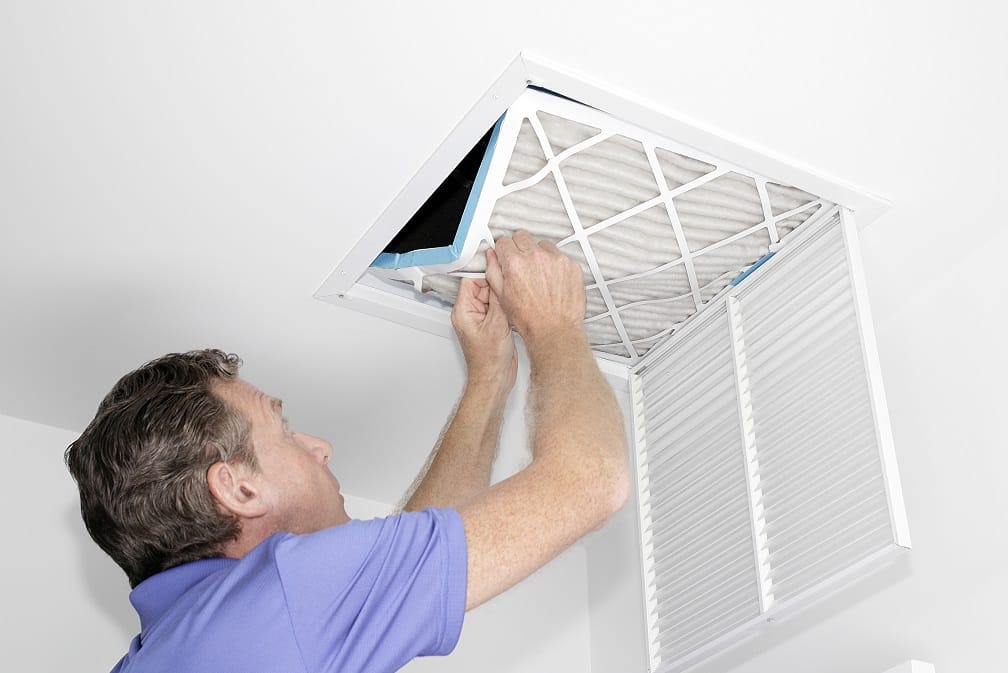A naturally occurring mineral, Asbestos, was for decades used as a popular building material. Usually white, when unbound or deteriorated, asbestos can crumble. Exposure to asbestos fibers s harmful. According to the World Health Organization, exposure to Asbestos fibers has killed over 107,000 people globally every year.
Asbestos is commonly wrapped around water boilers and hot water pipes, ceiling and flooring materials, or used to tape sections of heating ducts together in older homes. Fortunately, left undisturbed Asbestos in harmless and only becomes dangerous when damaged or moved. When the asbestos fiber become airborne, it gets inhaled, putting people’s health at risk.
Across the United States, millions of homes contain Asbestos in one form or the other. Although the manufacture of asbestos materials for heating duct insulation has stopped, people living in houses built before the 1980s and those working with heating, ventilation, and air conditioning (HVAC) systems are still at risk of asbestos exposure today.
Why Was Asbestos Used In Ducts?
Metal air ducts are typically used for connecting rooms in a building to facilitate the running of HVAC equipment and systems. However, when the ducts are directly attached to air conditioners, heaters, and air handlers, the vibrations and noise produced may rattle throughout your entire house ventilation system.
For several decades during the mid-20th century, most manufacturers deemed Asbestos one of the best materials for flexible duct connectors. Asbestos is practically fireproof, very durable yet flexible enough for easy weaving into many types of fabric. During the height of its use in America, flexible duct connectors usually contained considerable amounts of chrysotile asbestos.
A dramatic decline in the use of Asbestos began by the late 1970s, not just in the US but across most industrialized nations. The connection between asbestos exposure and the risk of debilitating lung diseases was beginning was becoming public knowledge. In the US, the last mine closed in 2002, effectively ending over a century of asbestos production.
Testing for Asbestos in Your Ducts?
While an expert lab test may be necessary to identify the particular type of asbestos fiber, many asbestos-containing building materials are easy and obvious to recognize. However, many asbestos materials used in older houses in the US generally don’t have any labels. It’s not always easy to tell by merely looking at the ACMs.
Only microscopic testing of the suspect samples can decisively reveal the presence of the toxic substance. The testing can only be conclusively done in a laboratory by professional asbestos abatement personal. Asbestos-containing materials inside the return air ducts are some of the most potentially hazardous locations in heating and cooling systems. An example of such a place is the plumbing pipes between your floor joists. Cement asbestos transite pipes have previously been used as HVAC air ducts in older homes, making them another risky area in case they get damaged.
If you are in the process of renovating an older home, be alert to finding unexpected sources of ACMs. Before starting your renovation project, get a professional opinion and, if needed, hire a professional for the removal. Homeowners should not attempt collecting samples for testing on your own. It’s always best to leave the testing to a professional.
The Risk Posed by Asbestos
Asbestos-containing wraps and tapes were often directly placed inside heating vents in older homes. The ducts’ interior surfaces are usually covered with metal foil to prevent direct contact of asbestos material with the air stream. Though not very common, they exist even today and pose a health risk.
If the ducts become torn or punctured, asbestos fibers might get released into the system’s air stream. In such a case, removal or repair by a licensed asbestos contractor is recommended. Detection typically requires removing the duct covers, which can easily damage the vents as they are usually painted. Removal may also damage the adjacent wall.
If your house has heating ducts that contain Asbestos, you’re strongly advised against attempting to remove the torn or damaged pipe wrapping on your own. When you remove or interfere with the asbestos insulation around pipes, boilers, and furnaces, it releases asbestos fibers or dust.
Once you inhale these asbestos fibers, they get stuck in the natural lining of your body. Your body has no mechanism capable of removing the lodged asbestos fibers. Microscopic asbestos dust or fiber has no scent, and the symptoms of exposure may not develop until many years later.
Your Asbestos Removal Options
When making significant changes or remodeling your home, you might disturb asbestos-containing material making their removal necessary. If Asbestos becomes damaged, fibers may be released. If during renovations the asbestos breaks or comes apart, leave it alone and call the professionals.
Performing duct cleaning when you suspect it contains ACMs is undoubtedly not a wise idea. First, have the Asbestos abated before cleaning the ducts. When damaged, disturbed, repaired, torn, cut, drilled, sanded, sawed, scraped, scratched or removed improperly, asbestos-containing materials may release loose fibers.
US law prohibits you from engaging the services of anyone other than a government-certified abatement contractor to remove Asbestos. Abatement professionals are trained to safely and effectively remove Asbestos. Besides, they perform air monitoring to ensure that the air you breathe in your home is safe and meets acceptable standards after the removal is done.
Local authorities and the US EPA maintains a list of recommended Asbestos abatement contractors in different states and recommendations for homeowners if they encounter the material in their homes.
Conclusion
Although Asbestos use dates back to prehistoric times, the naturally-occurring mineral only came to popularity during the period of rapid growth witnessed during the Industrial Age. The US regulation of its use only began in the 1970s, but it has yet to ban the mineral altogether. Despite efforts to use the material safely, it still poses a danger to human health. Asbestos is responsible for causing such crippling diseases like lung cancer, asbestosis, and mesothelioma.
Federal US law doesn’t require people who inspect, remove, or repair asbestos-containing materials in single-family detached homes to be accredited and trained. However, some local and state governments do require this.

